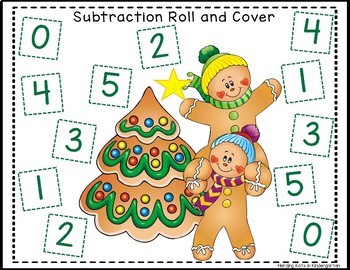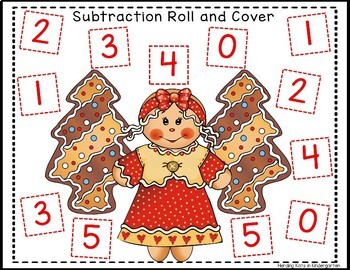Gingerbread Man Math Addition and Subtraction Games
- PDF
Description
Fun Gingerbread Man activities for addition and subtraction! Students practice their addition or subtraction while playing in pairs. Just give them some 2-colored tokens or two bingo daubers and a set of dice and they are ready to go!
I have included 2 game boards for addition with 2 dice, 2 game boards for subtraction and 1 game board for addition with THREE dice for your advanced kiddos! I usually laminate each board for durability. There are also 3 recording sheets, one for addition with two dice, another for the addition with three dice and the last goes along with the subtraction with two dice!
This set is Gingerbread themed! It will go great with any gingerbread unit! I find that my students' interest in the games gets revived when they have a new look, so I create these for all of my themes throughout the year!
You Might Also Like:
• Gingerbread Man Activities Pack
• Gingerbread Man Activities: Graphing
• Gingerbread Man Activities: Letters & Sounds!
• Gingerbread Man Activities: Math Centers
• Gingerbread Man Activities: Rhyming
• Gingerbread Man Activities: Sight Words
• Gingerbread Man CVC Words Activity
• Gingerbread Man Emergent Readers





